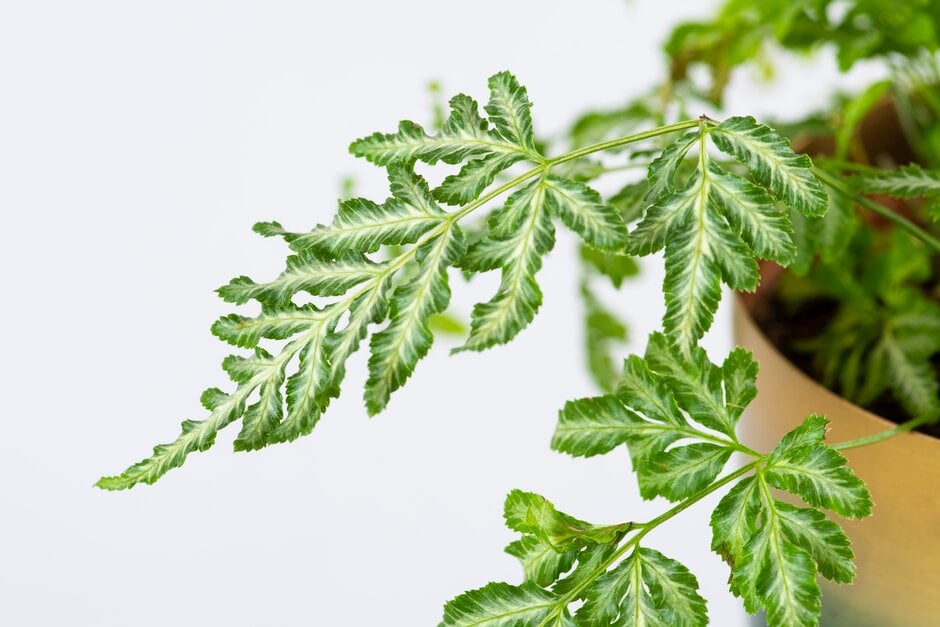Size
Ultimate height
0.1–0.5 metresTime to ultimate height
5–10 yearsUltimate spread
0.1–0.5 metresGrowing conditions
Moisture
Moist but well–drainedpH
Alkaline, NeutralColour & scent
| Stem | Flower | Foliage | Fruit | |
| Spring | Green Grey Silver White | |||
|---|---|---|---|---|
| Summer | Green Grey Silver White | |||
| Autumn | Green Grey Silver White | |||
| Winter | Green Grey Silver White |
Position
- Full shade
- Partial shade
Aspect
South–facing or East–facing or West–facing
Exposure
Sheltered Hardiness
H1CBotanical details
- Family
- Pteridaceae
- Native to GB / Ireland
- No
- Foliage
- Evergreen
- Habit
- Tufted
- Genus
Pteris can be evergreen, semi-evergreen or deciduous ferns, with short or long rhizomes and fronds that may be pinnate to 4-pinnate
- Name status
Accepted
How to grow
Cultivation
Grow outdoors in moist but well-drained soil with plenty of added leaf-mould or in a container under glass with added limestone chips in high humidity. See how to grow tender ferns outdoors or house to grow ferns as houseplants for further advice
Propagation
Propagate by sowing spores as soon as ripe or division of rhizomes in spring
Suggested planting locations and garden types
- Houseplants
- Patio and container plants
- Rock garden
- Cottage and informal garden
- Low Maintenance
- Underplanting of roses and shrubs
Pruning
Dead or damaged fronds may be removed as necessary
Pests
Generally pest-free outdoors but under glass may be susceptible to scale insects and eelworms
Diseases
May be susceptible to sooty mould
Get involved
The Royal Horticultural Society is the UK’s leading gardening charity. We aim to enrich everyone’s life through plants, and make the UK a greener and more beautiful place.
